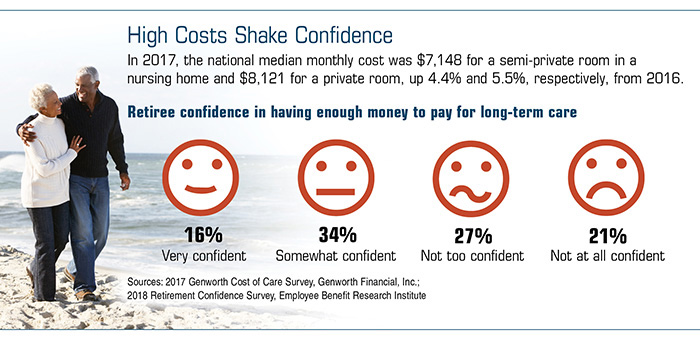Get This Report on Pacific Prime
Table of ContentsThe Of Pacific Prime6 Simple Techniques For Pacific PrimePacific Prime Can Be Fun For AnyoneThe Facts About Pacific Prime RevealedThe Only Guide for Pacific Prime

This is since the data were accumulated for a period of solid financial performance. Of the approximated 42 million people who were uninsured, all yet about 420,000 (about 1 percent) were under 65 years old, the age at which most Americans become qualified for Medicare; 32 million were adults between ages 18 and 65, around 19 percent of all adults in this age team; and 10 million were youngsters under 18 years old, concerning 13.9 percent of all children (Mills, 2000).
These estimates of the variety of persons uninsured are generated from the yearly March Supplement to the Current Population Study (CPS), performed by the Demographics Bureau. Unless or else noted, nationwide price quotes of people without medical insurance and proportions of the population with various sort of coverage are based on the CPS, the most widely utilized resource of estimates of insurance protection and uninsurance prices.
Our Pacific Prime Ideas

Still, the CPS is especially useful due to the fact that it generates yearly estimates fairly promptly, reporting the previous year's insurance policy coverage estimates each September, and due to the fact that it is the basis for a constant collection of price quotes for even more than two decades, permitting evaluation of fads in coverage in time. For these reasons, along with the substantial use of the CPS in various other studies of insurance policy coverage that exist in this report, we count on CPS quotes, with constraints kept in mind.

The quote of the number of without insurance people increases when a populace's insurance coverage condition is tracked for several years. Over a three-year duration starting early in 1993, 72 million people, 29 percent of the united state population, lacked protection for at least one month. Within a solitary year (1994 ), 53 million people experienced a minimum of a month without protection (Bennefield, 1998a)
6 out of every 10 without insurance adults are themselves used. Working does improve the probability that one and one's family participants will have insurance coverage, it is not an assurance. Even participants of families with 2 permanent breadwinner have virtually a one-in-ten chance of being uninsured (9.1 percent uninsured rate) (Hoffman and Pohl, 2000).
The Ultimate Guide To Pacific Prime
New immigrants represent a considerable proportion of people without health insurance. One evaluation has attributed a considerable portion of the recent development in the dimension of the united state uninsured populace to immigrants who got here in the country in between 1994 and 1998 (Camarota and Edwards, 2000). Current immigrants (those that involved the United States within the past 4 years) do have a high price of being without insurance (46 percent), but they and their children account for simply 6 percent of those without insurance policy across the country (Holahan et al., 2001).
The relationship between health insurance policy and accessibility to care is well established, as recorded later on in this phase. The connection in between wellness insurance policy and health outcomes is neither straight neither simple, a substantial professional and wellness services study literature web links health and wellness insurance coverage to better access to care, far better quality, and enhanced individual and populace health and wellness standing.
Levels of analysis for checking out the effects of uninsurance. This conversation of medical insurance protection focuses primarily on the united state populace under age 65 because essentially all Americans 65 and older have Medicare or various other public coverage. It concentrates especially on those without any type of wellness insurance for any kind of length of time.
Pacific Prime Things To Know Before You Get This
The issues dealt with by the underinsured are in some respects similar to those encountered by the uninsured, although they are typically much less extreme. international health insurance. Uninsurance and underinsurance, however, entail noticeably various policy concerns, and the techniques for resolving them may differ. Throughout this research study and the five records to comply with, the primary emphasis is on individuals without any medical insurance and hence no help in spending for health treatment beyond what is available through charity and safeguard establishments
Medical insurance is a powerful aspect influencing receipt of care due to the fact that both patients and medical professionals react to the out-of-pocket cost of solutions - https://www.pubpub.org/user/freddy-smith-2. Medical insurance, however, is neither essential nor adequate to access to medical services. Nevertheless, the independent and direct effect of wellness insurance policy coverage on accessibility to health solutions is well established.
Others will certainly get the health treatment they require even without health and wellness insurance, by spending for it published here out of pocket or seeking it from providers that offer care cost-free or at highly subsidized prices. For still others, health and wellness insurance policy alone does not make sure receipt of care due to various other nonfinancial obstacles, such as an absence of healthcare service providers in their area, limited accessibility to transport, illiteracy, or etymological and social differences.
Pacific Prime for Beginners
Formal research study concerning uninsured populations in the USA dates to the late 1920s and early 1930s when the Committee on the Cost of Healthcare generated a collection of reports about funding doctor workplace brows through and hospital stays. This issue ended up being prominent as the varieties of medically indigent climbed during the Great Anxiety.